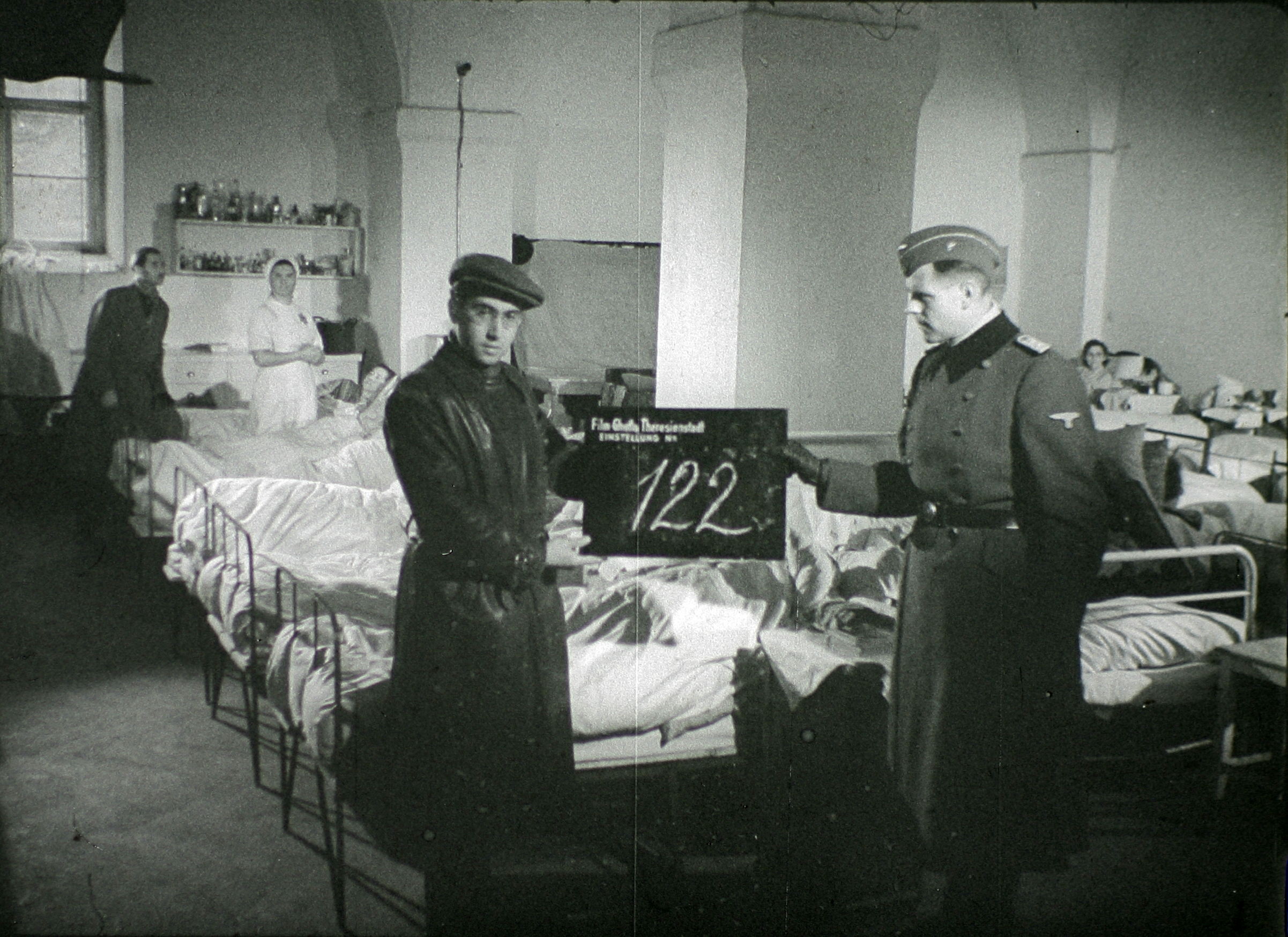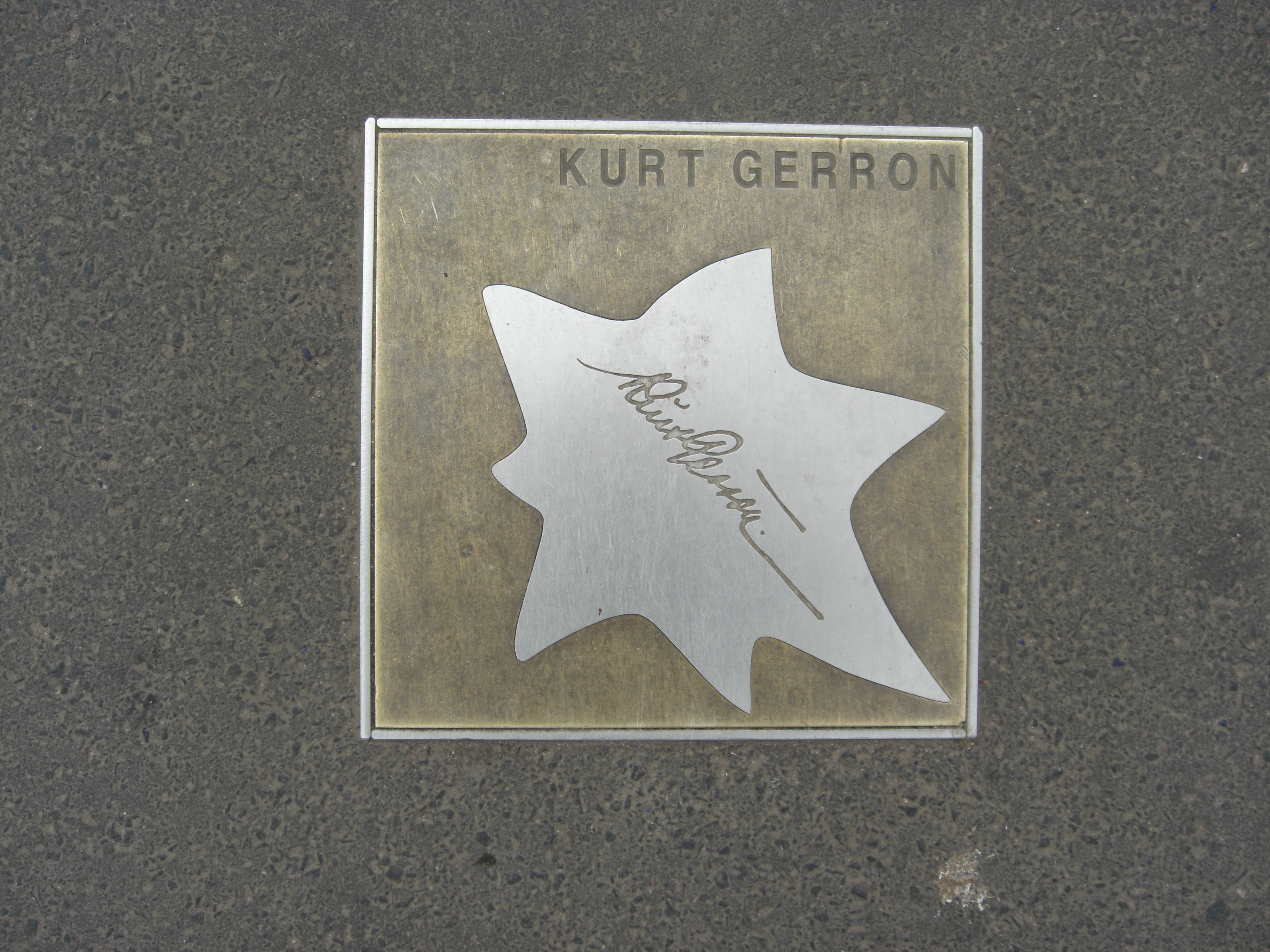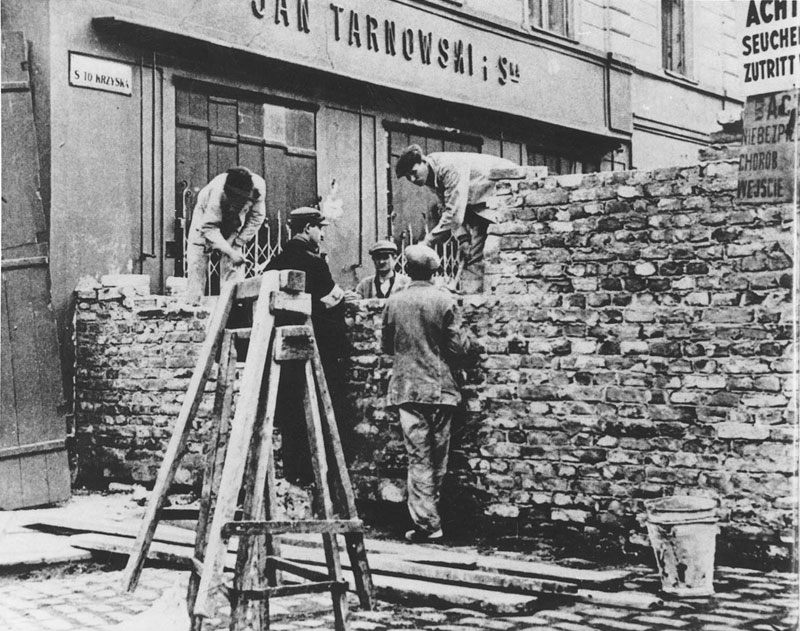|
Theresienstadt (film)
''Theresienstadt. Ein Dokumentarfilm aus dem jüdischen Siedlungsgebiet'' ("Theresienstadt: A Documentary Film from the Jewish Settlement Area"), unofficially ''Der Führer schenkt den Juden eine Stadt'' ("The Führer Gives a City to the Jews"), was a black-and-white projected Nazi propaganda film. It was directed by the German Jewish prisoner Kurt Gerron and the Czech filmmaker Karel Pečený under close SS supervision in the Theresienstadt concentration camp, and edited by Pečený's company, Aktualita. Filmed mostly in the autumn of 1944, it was completed on 28 March 1945 and screened privately four times. After the war, the film was lost but about twenty minutes of footage was later rediscovered in various archives. Unlike other Nazi propaganda films, which were under the control of Joseph Goebbels' Ministry of Propaganda, ''Theresienstadt'' was conceived and paid for by the Jewish Affairs department of the Protectorate of Bohemia and Moravia, at the initiative of Hans G ... [...More Info...] [...Related Items...] OR: [Wikipedia] [Google] [Baidu] |
Kurt Gerron
Kurt Gerron (11 May 1897 – 28 October 1944) was a German Jewish actor and film director. He and his wife, Olga were murdered in the Holocaust. Life Born Kurt Gerson into a well-off merchant family in Berlin, he studied medicine before being called up for military service in World War I. After being seriously wounded, he was qualified as a military doctor in the German Army, despite having been only in his second year at university. After the war Gerron turned to a stage career, becoming a theatre actor under director Max Reinhardt in 1920. He appeared in secondary roles in several silent films and began directing film shorts in 1926. Gerron's popular cinema breakthrough came with '' The Blue Angel'' (''Der Blaue Engel'', 1930) opposite Marlene Dietrich. Two years before, Gerron originated the role of "Tiger" Brown in the 1928 premiere production of ''The Threepenny Opera'' (''Die Dreigroschenoper'') at the Berlin Theater am Schiffbauerdamm, in which he also performed the first ... [...More Info...] [...Related Items...] OR: [Wikipedia] [Google] [Baidu] |
Nazi Ghetto
Beginning with the invasion of Poland during World War II, the Nazi regime set up ghettos across German-occupied Eastern Europe in order to segregate and confine Jews, and sometimes Romani people, into small sections of towns and cities furthering their exploitation. In German documents, and signage at ghetto entrances, the Nazis usually referred to them as ''Jüdischer Wohnbezirk'' or ''Wohngebiet der Juden'', both of which translate as the Jewish Quarter. There were several distinct types including ''open ghettos'', ''closed ghettos'', ''work'', ''transit'', and ''destruction ghettos'', as defined by the Holocaust historians. In a number of cases, they were the place of Jewish underground resistance against the German occupation, known collectively as the ghetto uprisings. Background and establishment of the ghettos The first anti-Jewish measures were enacted in Germany with the onset of Nazism; these measures did not include ghettoizing German Jews: such plans were reject ... [...More Info...] [...Related Items...] OR: [Wikipedia] [Google] [Baidu] |
Theresienstadt Family Camp
The Theresienstadt family camp ( cs, Terezínský rodinný tábor, german: Theresienstädter Familienlager), also known as the Czech family camp, consisted of a group of Jewish inmates from the Theresienstadt ghetto in Czechoslovakia, who were held in the BIIb section of the Auschwitz II-Birkenau concentration camp from 8 September 1943 to 12 July 1944. The Germans created the camp to mislead the outside world about the Final Solution. Deported from the ghetto in seven transports in September and December 1943, and May 1944, the prisoners were not subjected to selection on arrival, an unusual situation in Auschwitz, and were granted several "privileges", including the creation of a children's block that provided the only attempt at organized education at Auschwitz. The living conditions nevertheless remained poor and the mortality rate was high. Most of the inhabitants who did not die of starvation or disease were murdered during the camp liquidations on 8–9 March and 10–1 ... [...More Info...] [...Related Items...] OR: [Wikipedia] [Google] [Baidu] |
Maurice Rossel
Maurice Rossel ( – after 1997) was a Swiss doctor and International Committee of the Red Cross (ICRC) official during the Holocaust. He is best known for visiting Theresienstadt concentration camp on 23 June 1944; he erroneously reported that Theresienstadt was the final destination for Jewish deportees and that their lives were "almost normal". His report, which is considered "emblematic of the failure of the ICRC" during the Holocaust, undermined the credibility of the more accurate Vrba-Wetzler Report and misled the ICRC about the Final Solution. Rossel later visited Auschwitz concentration camp. In 1979, he was interviewed by Claude Lanzmann; based on this footage, the 1997 film ''A Visitor from the Living'' ( fr) was produced. Early life Information on Rossel's biography is limited. He was born in . He was born in Tramelan, a village in the French speaking part of the Canton of Bern. Until his retirement in the early 1980 decade he was a very appreciated generalist in hi ... [...More Info...] [...Related Items...] OR: [Wikipedia] [Google] [Baidu] |
International Committee Of The Red Cross
The International Committee of the Red Cross (ICRC; french: Comité international de la Croix-Rouge) is a humanitarian organization which is based in Geneva, Switzerland, and it is also a three-time Nobel Prize Laureate. State parties (signatories) to the Geneva Convention of 1949 and its Additional Protocols of 1977 ( Protocol I, Protocol II) and 2005 have given the ICRC a mandate to protect victims of international and internal armed conflicts. Such victims include war wounded persons, prisoners, refugees, civilians, and other non-combatants. The ICRC is part of the International Red Cross and Red Crescent Movement, along with the International Federation of Red Cross and Red Crescent Societies (IFRC) and 192 National Societies. It is the oldest and most honoured organization within the movement and one of the most widely recognized organizations in the world, having won three Nobel Peace Prizes (in 1917, 1944, and 1963). History Solferino, Henry Dunant and the foun ... [...More Info...] [...Related Items...] OR: [Wikipedia] [Google] [Baidu] |
Reinhard Heydrich
Reinhard Tristan Eugen Heydrich ( ; ; 7 March 1904 – 4 June 1942) was a high-ranking German SS and police official during the Nazi era and a principal architect of the Holocaust. He was chief of the Reich Security Main Office (including the Gestapo, Kripo, and SD). He was also ''Stellvertretender Reichsprotektor'' (Deputy/Acting Reich-Protector) of Bohemia and Moravia. He served as president of the International Criminal Police Commission (ICPC, now known as Interpol) and chaired the January 1942 Wannsee Conference which formalised plans for the " Final Solution to the Jewish question"—the deportation and genocide of all Jews in German-occupied Europe. Many historians regard Heydrich as the darkest figure within the Nazi regime; Adolf Hitler described him as "the man with the iron heart". He was the founding head of the ''Sicherheitsdienst'' (Security Service, SD), an intelligence organisation charged with seeking out and neutralising resistance to the Nazi Part ... [...More Info...] [...Related Items...] OR: [Wikipedia] [Google] [Baidu] |
Reichsprotektor
This is a list of rulers of the Protectorate of Bohemia and Moravia, which from 15 March 1939 until 5 May 1945 comprised the German- occupied parts of Czechoslovakia. It includes both the representatives of the recognized Czech authorities as well as the German ''Reichsprotektoren'' ("Reich protectors") and the ''Staatsminister'' ("State Minister"), who held the real executive power. Government of the Protectorate Note: State President (''Státní prezident'' / ''Staatspräsident'') Emil Hácha and Prime Minister (''Předseda vlády'' / ''Premierminister'') Rudolf Beran held the office prior the German occupation, during the Second Czechoslovak Republic, and were officially confirmed in those positions (with very limited sovereignty and power) by German authorities within few days after the occupation. State President of Bohemia and Moravia Prime Ministers of Bohemia and Moravia German representatives Supreme Commander of the Wehrmacht in Bohemia and Moravia Re ... [...More Info...] [...Related Items...] OR: [Wikipedia] [Google] [Baidu] |
Reich Security Main Office
The Reich Security Main Office (german: Reichssicherheitshauptamt or RSHA) was an organization under Heinrich Himmler in his dual capacity as ''Chef der Deutschen Polizei'' (Chief of German Police) and '' Reichsführer-SS'', the head of the Nazi Party's ''Schutzstaffel'' (SS). The organization's stated duty was to fight all "enemies of the Reich" inside and outside the borders of Nazi Germany. Formation and development Himmler established the RSHA on 27 September 1939. His assumption of control over all security and police forces in Germany was a significant factor in the growth in power of the Nazi state. With the formation of the RSHA, Himmler combined under one roof the Nazi Party's '' Sicherheitsdienst'' (SD; SS intelligence service) with the '' Sicherheitspolizei'' (SiPo; "Security Police"), which was nominally under the Interior Ministry. The SiPo was composed of two sub-departments, the ''Geheime Staatspolizei'' (Gestapo; "Secret State Police") and the ''Kriminalpol ... [...More Info...] [...Related Items...] OR: [Wikipedia] [Google] [Baidu] |
SS Central Office For The Settlement Of The Jewish Question In Bohemia And Moravia
SS is an abbreviation for '' Schutzstaffel'', a paramilitary organisation in Nazi Germany. SS, Ss, or similar may also refer to: Places *Guangdong Experimental High School (''Sheng Shi'' or ''Saang Sat''), China * Province of Sassari, Italy (vehicle plate code) * South Sudan (ISO 3166-1 code SS) *SS postcode area, UK, around Southend-on-Sea * San Sebastián, Spanish city Arts, entertainment, and media *SS (band), an early Japanese hardcore punk band * ''SS'' (manga), a Japanese comic 2000-2003 *SS Entertainment, a Korean entertainment company *''S.S.'', for Sosthenes Smith, H. G. Wells pseudonym for story ''A Vision of the Past'' *SS, the production code for the 1968 ''Doctor Who'' serial ''The Wheel in Space'' *''Sesame Street'', American kids' TV show Language *Ss (digraph) used in Pinyin * ß or ss, a German-language ligature * switch-reference in linguistics *''Scilicet'', used as a section sign * (''in the strict sense'') in Latin * Swazi language (ISO 639-1 code "ss") ... [...More Info...] [...Related Items...] OR: [Wikipedia] [Google] [Baidu] |
Theresienstadt (1942 Film)
Theresienstadt Ghetto was established by the Schutzstaffel, SS during World War II in the fortress town of Terezín, in the Protectorate of Bohemia and Moravia (German occupation of Czechoslovakia, German-occupied Czechoslovakia). Theresienstadt served as a waystation to the extermination camps. Its conditions were deliberately engineered to hasten the death of its prisoners, and the ghetto also served a propaganda role. Unlike other ghettos, the Forced labor in Nazi Germany, exploitation of forced labor was not economically significant. The ghetto was established by the transportation of Czech Jews in November 1941. The first German Jews, German and Austrian Jews arrived in June 1942; Dutch Jews, Dutch and Danish Jews came at the beginning in 1943, and prisoners of a wide variety of nationalities were sent to Theresienstadt in the last months of the war. About 33,000 people died at Theresienstadt, mostly from malnutrition and disease. More than 88,000 people were held there for ... [...More Info...] [...Related Items...] OR: [Wikipedia] [Google] [Baidu] |
Extermination Camps
Nazi Germany used six extermination camps (german: Vernichtungslager), also called death camps (), or killing centers (), in Central Europe during World War II to systematically murder over 2.7 million peoplemostly Jewsin the Holocaust. The victims of death camps were primarily murdered by gassing, either in permanent installations constructed for this specific purpose, or by means of gas vans. The six extermination camps were Chełmno, Belzec, Sobibor, Treblinka, Majdanek and Auschwitz-Birkenau. Auschwitz and Majdanek death camps also used extermination through labour in order to kill their prisoners. The idea of mass extermination with the use of stationary facilities, to which the victims were taken by train, was the result of earlier Nazi experimentation with chemically manufactured poison gas during the secretive Aktion T4 euthanasia programme against hospital patients with mental and physical disabilities. The technology was adapted, expanded, and applied in wa ... [...More Info...] [...Related Items...] OR: [Wikipedia] [Google] [Baidu] |
Nazi Ghettos
Beginning with the invasion of Poland during World War II, the Nazi regime set up ghettos across German-occupied Eastern Europe in order to segregate and confine Jews, and sometimes Romani people, into small sections of towns and cities furthering their exploitation. In German documents, and signage at ghetto entrances, the Nazis usually referred to them as ''Jüdischer Wohnbezirk'' or ''Wohngebiet der Juden'', both of which translate as the Jewish Quarter. There were several distinct types including ''open ghettos'', ''closed ghettos'', ''work'', ''transit'', and ''destruction ghettos'', as defined by the Holocaust historians. In a number of cases, they were the place of Jewish underground resistance against the German occupation, known collectively as the ghetto uprisings. Background and establishment of the ghettos The first anti-Jewish measures were enacted in Germany with the onset of Nazism; these measures did not include ghettoizing German Jews: such plans were reje ... [...More Info...] [...Related Items...] OR: [Wikipedia] [Google] [Baidu] |





.jpg)


